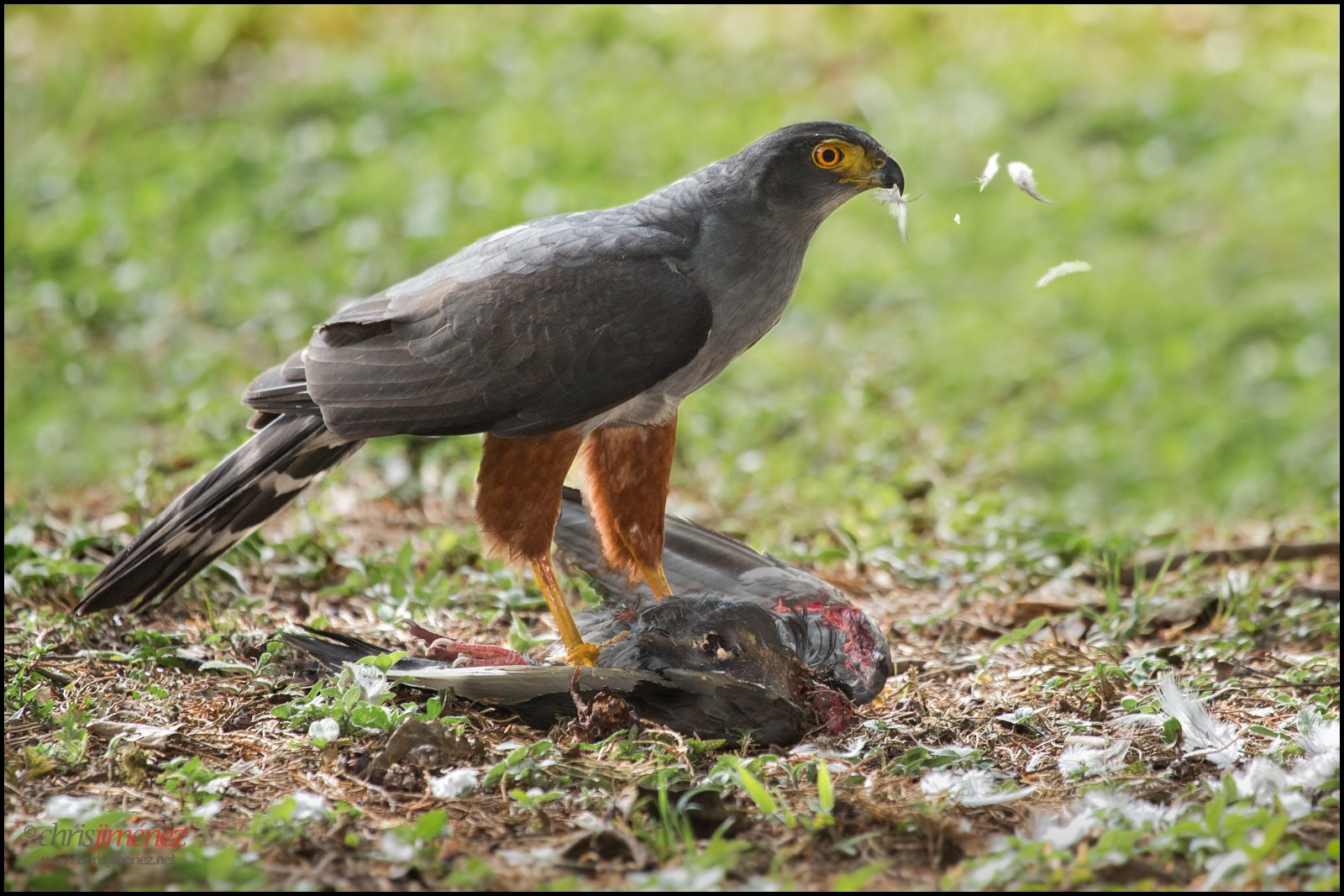Bicolored Hawk
A species of Bird Hawks Scientific name : Accipiter bicolor Genus : Bird Hawks
Bicolored Hawk, A species of Bird Hawks
Botanical name: Accipiter bicolor
Genus: Bird Hawks
Content
Description General Info
 Photo By Chris Jimenez , used under CC-BY-SA-2.0 /Cropped and compressed from original
Photo By Chris Jimenez , used under CC-BY-SA-2.0 /Cropped and compressed from original Description
At 34–45 centimetres (13–18 in) in length and 200–450 grams (7.1–15.9 oz) in weight, it is significantly smaller than the northern goshawk of Eurasia and North America, and somewhat smaller than the Cooper's hawk of North America, but among the largest Accipiter hawks in Central and South America (only the rare grey-bellied hawk is larger). As in other Accipiter hawks, the female is far larger than the male. Adults are grey above with darker wings and crown, and a banded tail. The underparts typically vary from dark grey to very pale grey, but the southern subspecies can sometimes be rufescent below. The thighs are always pure rufous (not always easily seen), and the underwing coverts are white in the northern subspecies and rufous in the southern. Juveniles are very variable. They can be white, buff or rufous below, and sometimes with dark streaks. Their upperparts are browner than in adults, and the thighs are sometimes paler. 
Size
42 cm
Nest Placement
Tree
Feeding Habits
Bicolored Hawk primarily preys on smaller birds and mammals, including thrushes, small doves, and bats. They also consume reptiles and insects. Their hunting techniques involve stealthy flights and surprise attacks. Bicolored Hawk exhibits unique adaptations for agile flight through dense vegetation to catch elusive prey.
Habitat
Bicolored Hawk's habitat includes a variety of forested environments primarily within tropical and, to a lesser extent, subtropical zones. They are typically associated with wet tropical forests, such as rainforests in the Guianas. However, bicolored Hawk is also common in drier, open, or logged forests, adapting well to altered landscapes. Habitats like palm savannas with gallery forests, forests around rural villages, second growth, and cerrado regions in southwestern Brazil also host this species. They can be located in clearings, along forest edges, and within patches of scattered forest.
Dite type
Carnivorous
General Info
Feeding Habits
Bird food type
Behavior
The bicolored hawk is difficult to detect due to its shyness and inconspicuousness. Because of this behaviour, the bicolored hawk may be more common than it seems. 
Distribution Area
The bicolored hawk is widespread but uncommonly observed. Its range extends from Mexico to west Ecuador, the Guianas to Colombia, south to east Peru, through Amazonian Brazil to Paraguay, north-northwestern Argentina, Bolivia and to Chile. It mainly resides in forest, along forest edges and in clearings in tropical and locally subtropical zones, although its habitat is none too specialized. It may also reside in rain forest, drier, thinned forest, and palm savanna with gallery forest. Forest disturbance and fragmentation negatively affect the habitat and quantity of the bicolored hawk, which is most abundant in primary undisturbed forest or riparian forest. There are fewer hawks in disturbed habitats such as forests that have been logged, and even fewer in those fragmented habitats that provide greater than 66% forest cover. These hawks are rarely present in forests that provide less than 66% forest cover. 
Species Status
Not globally threatened.